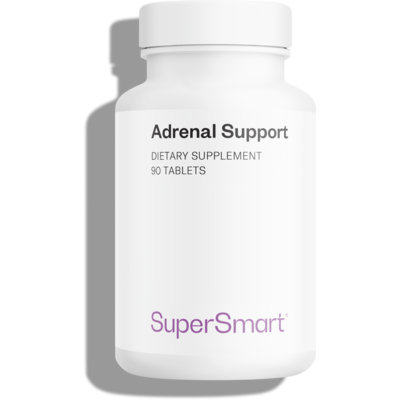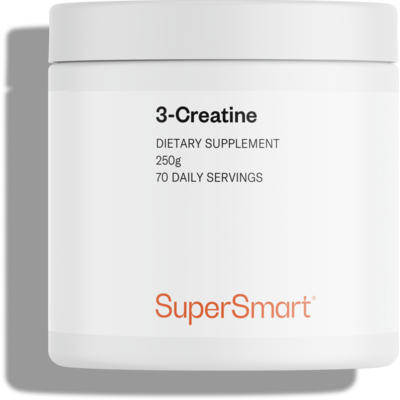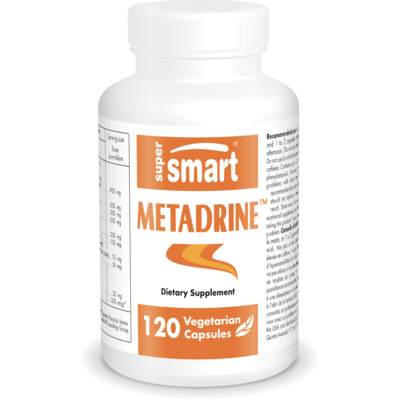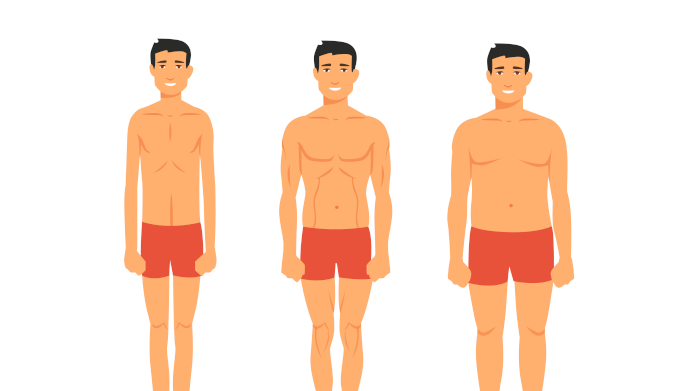Metabolic reset: benefits and effective method
Looking for reliable information on how to achieve a ‘metabolic reset’? Want to rebalance your metabolism in order to lose or gain weight? Here’s what you need to know.

What is a metabolic reset and what benefits does it offer?
Definition of a metabolic reset
A metabolic reset is designed to achieve a long-lasting rebalancing of an individual’s metabolism in order to improve their general health and weight control, and prevent the onset or worsening of health problems such as diabetes, obesity and hypertension.
It may benefit:
- people who are overweight (from a few extra kilos to obese), as it usually leads to an acceleration in metabolism (1);
- and/or those who want to increase and sustain their muscle mass through training.
Optimising metabolism, our ability to produce and use energy
Metabolism refers to the set of chemical reactions which keep us alive, through the production and use of energy obtained from the food we eat.
We need energy to ensure basic functions such as breathing, blood flow and cell repair (2), though the amount required varies between individuals.
Some people have a naturally fast metabolism: they expend a lot of energy in maintaining their body’s normal functions and therefore tend not to gain weight as all the energy they absorb is used up.
Conversely, individuals with a slow metabolism do not require much energy to live: they have to be more careful about what they eat as any surplus energy is converted into body fat.
To this basal metabolic rate, we need to add the energy expenditure necessary for digesting food and engaging in physical activity, though these two energy expenditure items are generally secondary.
Why might our metabolism be out of balance?
These days, a large percentage of people in the Western world spend 9-10 hours a day sitting (3), that’s almost 70 hours a week.
By comparison, the three hours’ physical activity a week recommended as the minimum seems negligible.
This widespread lack of muscle activity, together with the problem of junk food and abundance in developed countries, all tend to lead to a slower metabolism, weight gain and numerous health problems.
A metabolic reset therefore aims to restore an individual’s metabolism to one appropriate for their energy output and food intake.
Metabolic reset and metabolic diets
A metabolic reset should not be confused with metabolic diets (or ‘metabolic cures’) which usually promise significant and rapid weight loss but which are bad for your health and optimal weight control in the long term. Indeed, these low-calorie diets based on an energy deficit actually serve to unbalance the metabolism.
A metabolic reset is more akin to the reverse dieting popular among competitive athletes, which supports a gradual return to a higher calorie intake whilst minimising the negative effects on metabolism.
How, in practice, can you rebalance your metabolism?
A metabolic reset involves making lasting changes to your eating habits, physical activity and lifestyle.
Increasing your level of physical activity: the essential element
This is the most important step in a metabolic reset. Exercise burns calories, restructures the fat stored in the body and boosts muscle mass. The more you increase your muscle mass, the more you speed up your metabolism.
Physical activity is a reliable, long-term metabolism-booster: most of the rare individuals who do not go on to regain the weight lost on a slimming diet, say they walk a lot and exercise regularly, even at a moderate level.
Here are three additional tips for stimulating your basal metabolic rate (4-5):
- start gradually by walking more, taking the stairs more frequently, and taking ‘active’ breaks at work. Daily life activities (NEAT for ‘non-exercise activity thermogenesis’) count for more than sports activities in the overall balance;
- consider short sessions of muscle-strengthening exercises. A simple 20-minute session can keep your metabolic rate elevated for the next two hours;
- choose at least one cardio-type exercise to perform two or three times a week, preferably one you enjoy. A 45-minute session increases your metabolic rate for 14 hours (6).
Metabolic reset: the importance of a balanced diet
It is not always necessary to eat less to stimulate your metabolism, simply to eat better. Here’s an overview of the most relevant advice given by nutritionists:
- drink at least two litres of water a day;
- limit your consumption of processed food, which is usually high in calories and low in nutritional benefits (vitamins, minerals, phytonutrients…);
- reduce your intake of refined sugars and saturated fats;
- eat a balanced diet, with seasonal, locally-sourced fruits and vegetables wherever possible to maximise their phytonutrient content;
- eat at least three meals a day and several healthy snacks in response to your body’s hunger and satiety signals;
- make sure you eat enough lean protein each day (eggs, poultry, pulses, whole grains, fish…) as it helps to boost muscle mass and the body mobilises more energy digesting it.
However, it’s important to stress that while diet is important, you’ll only see a real difference if it’s accompanied by the right level of physical activity.
Sleep and stress management
Chronic stress and lack of sleep can upset the hormones that regulate metabolism, leading to a fall in metabolic rate and weight gain. It’s therefore important to:
- try to regularly sleep for at least 8 hours a night;
- tackle chronic stress using all relevant means. Stress-induced cortisol slows down metabolism and can promote weight gain (7);
- weigh yourself regularly, but not fanatically, to monitor your weight progression and make adjustments if necessary.
Substances with potential effects on metabolism
Taking dietary supplements can help rebalance your basal metabolic rate, but only when accompanied by the key measures of increased physical activity and a balanced diet.
Substances which have a direct impact on metabolism
Certain substances can help increase metabolism and calorie expenditure.
When combined with tangible lifestyle changes, they can, over the long term, tip the balance in your favour.
These substances include tea and coffee, the caffeine and catechins in which help to support metabolism, ginger, guarana seeds and above all, capsaicin in chili peppers.
Capsaicin is also found in some fat-burning supplements (such as Metadrine™, a formulation rich in red chili pepper, caffeine, green tea extract, fucoxanthin, etc.)
Supplements to support muscle mass
Building muscle through the right exercise regime is a great way of improving metabolism.
So any substance that helps to directly or indirectly increase muscle mass can potentially support a metabolic reset: Branched-chain amino acids (BCAAs), creatine…
Supplements for managing stress and improving sleep
Finally, as we’ve seen, stress and lack of sleep have an adverse effect on metabolism.
Fortunately, there are many effective supplements for helping to improve stress management, including combinations of adaptogen plants, magnesium or vitamin C (such as Adrenal Support), blends of soothing essential oils (Organic Relaxing Oil Blend) or ‘stress-busting’ plant extracts (such as Stress Relief Formula).
In terms of sleep, melatonin and relaxing plant extracts (combined in Advanced Sleep Formula, rich in melatonin, valerian, hop…) have also been shown to be effective.
SuperSmart ADVICE
References
- Farhana A, Rehman A. Metabolic Consequences of Weight Reduction. [Updated 2023 Jul 10]. In: StatPearls [Internet]. Treasure Island (FL): StatPearls Publishing; 2024 Jan-. Available from: https://www.ncbi.nlm.nih.gov/books/NBK572145/
- Bawden SJ, Stephenson MC, Ciampi E, Hunter K, Marciani L, Macdonald IA, Aithal GP, Morris PG, Gowland PA. Investigating the effects of an oral fructose challenge on hepatic ATP reserves in healthy volunteers: A (31)P MRS study. Clin Nutr. 2016 Jun;35(3):645-9
- Hamilton, M. T., Hamilton, D. G., & Zderic, T. W. (2018). The Necessity of Active Muscle Metabolism for Healthy Aging: Muscular Activity Throughout the Entire Day. Metabolic Aspects of Aging,
- Wilmore, J. H., & Costill, D. L. (2009). Physical Energy: Fuel Metabolism. Nutrition Reviews, 59(1), S13–S16. doi:10.1111/j.1753-4887.2001.tb
- Speakman, J. R., & Selman, C. (2003). Physical activity and resting metabolic rate. Proceedings of the Nutrition Society, 62(03), 621–634. doi:10.1079/pns2003282
- Knab AM, Shanely RA, Corbin KD, Jin F, Sha W, Nieman DC. A 45-minute vigorous exercise bout increases metabolic rate for 14 hours. Med Sci Sports Exerc. 2011 Sep;43(9):1643-8. doi: 10.1249/MSS.0b013e3182118891. PMID: 21311363.
- Kiecolt-Glaser, J. K., Habash, D. L., Fagundes, C. P., Andridge, R., Peng, J., Malarkey, W. B., & Belury, M. A. (2015). Daily Stressors, Past Depression, and Metabolic Responses to High-Fat Meals: A Novel Path to Obesity. Biological Psychiatry, 77(7), 653–660. doi:10.1016/j.biopsych.2014.05.01
Keywords
4 Days
Great customer service - responsive …
I ordered from them and my item was unavailable for sometime. I was super happy when they reactivated my order and shipped my item which arrived very quickly. Great customer service.
Ruth Rueter
5 Days
Super fast shipping
Super fast shipping
Donald Borling
8 Days
Reputable companysearch and the number of…
The research and the number of selection of products.
NAKHJAVAN Shervin
21 Days
The Anti Aromatase is a great product
The Anti Aromatase is a great product. You just need to have constant inventory. Recently this product has been out of stock.
GEORGE Verne
23 Days
Great help on chat
Great help on chat. Knowledgeable and friendly.
Jason Argos
26 Days
Customer service was fast and friendly.
Customer service helped to stop the transaction process of the subscription. I appreciated that.
Greenie
27 Days
I order here due to the high quality of…
I order here due to the high quality of the products and the quick delivery of items - thank you
Barbara J
28 Days
SuperSmart's Eye Pressure supplements: highly recommended!
I purchase SuperSmart's Eye Pressure supplements regularly for over 5 years, and gotta say they are truly a wonderful product for my Glaucoma. Highly recommended if you have eye pain from your Glaucoma.
D. Martinez
32 Days
Quick service
Quick service
MONELL
33 Days
Speedy service.
Speedy service.
ROSENTHAL Marvin
37 Days
Clear website- Efficient
Clear website. Excellent search engine and fast delivery!
Mohamad Hussein
39 Days
They have great products.
They have great products.
Vickie
39 Days
Great Shipping Time!
You Have A Great Shipping Time! Praise The Lord!
DMHoge
41 Days
Doctor Recommended!
Good pricing, very good availability, doctor recommended (couldn't find what I needed anywhere else), and it took only a week to arrive (which I can't complain about).
Al
42 Days
Great product and fast shipping
Great product and fast shipping
Marie











